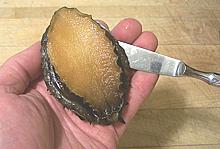
Scraping from shell
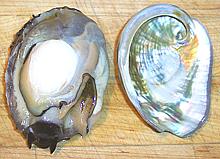
Shell removed
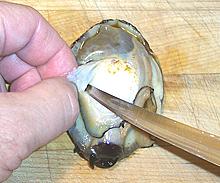
Trimming viscera
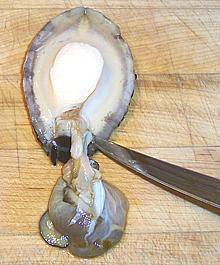
Cutting away head
The Internet has plenty of instructions on how to prepare abalone, but oriented to divers who catch 7" and larger wild ones. Follow those instructions with the 3-1/2 farmed ones we non-divers are likely to get and you'll end up with just about nothing. For one thing divers' instructions are oriented to making abalone steaks. A 3-1/2 incher just isn't going to make steaks.
- Hold the abalone in your hand face toward you (holes on the left). Go in from the shallow side (opposite the holes) with a dull butter knife and scrape along the shell to find the muscle. Scrape it free from the shell. It'll be just a little to the front of center.
- Take your butter knife and scrape all the way around the edge of the shell to free the mantle attachment. The abalone should now come completely free of the shell.
- Next remove the viscera from the foot. Except at the head end it's attached only to the very edge of the foot muscle where it was attached to the shell
- Now cut down a bit deeper to remove the head from the muscle. You'll have to scoop a little out of a cavity in the muscle to get it all.
- The next step is to scrub your abalone thoroughly with a stiff bristle brush under running water. This will remove all the dark coloration leaving you a clean foot muscle.
- Note in the side view the double fringe where the mantle was attached to the edge of the shell. Instructions for large abalone tell you to cut this away but admit it's perfectly edible. For the uses you'll probably put your small abalone to it is not necessary to remove this fringe.
- It will probably not be necessary to pound the muscle to tenderize it as with large abalone, but if you think it's necessary for your particular use, slice it into 1/4" thick pieces and pound them with the flat side of your kitchen mallet, but not so much the flesh starts to tear apart.
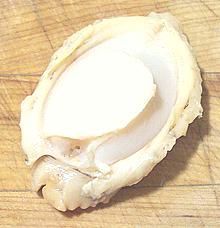
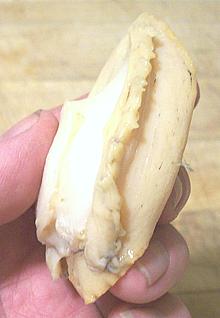
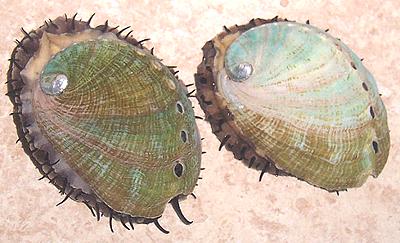 [Abulon - various species of genus Haliotis]
[Abulon - various species of genus Haliotis]